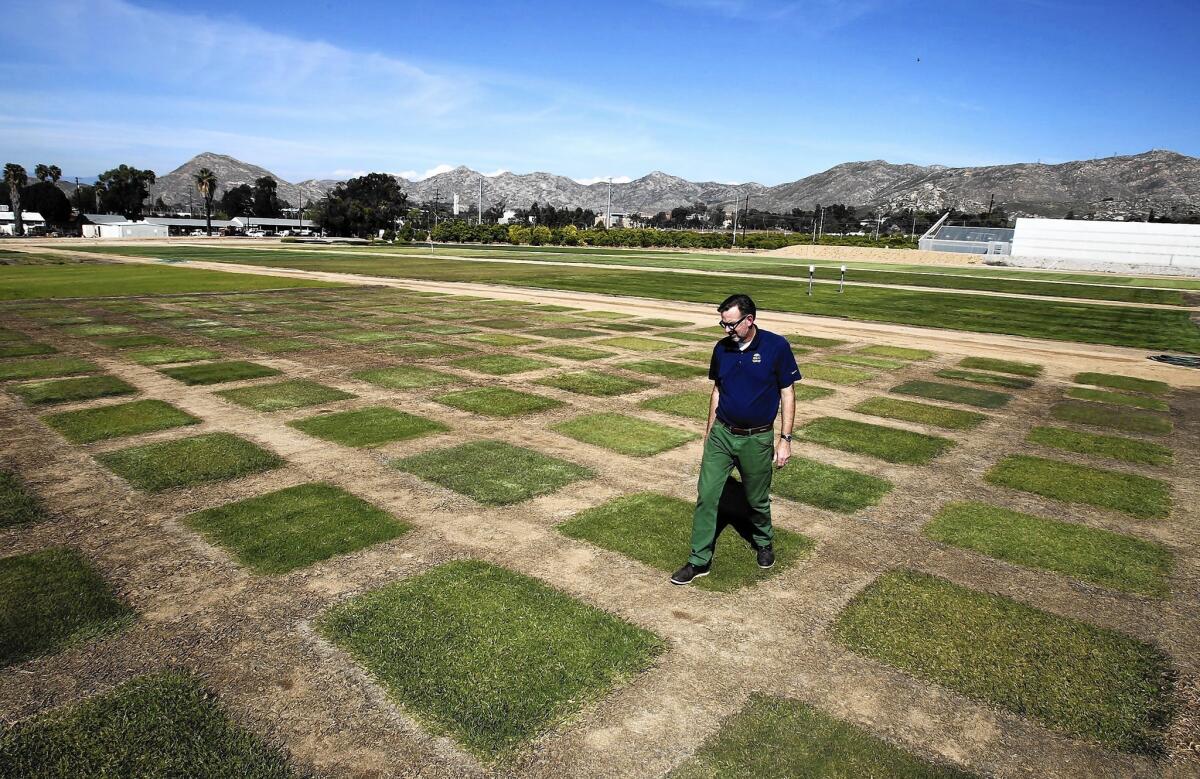Seven tips for a water-wise lawn

A little education can go a long way toward maintaining and preserving an existing lawn, or establishing a new one, while minimizing water use. Southern California turfgrass experts provide some advice for saving water on your lawn.
Choose the right turfgrass. Warm-season grasses need 20% less water than cool-season grasses — and rebound well with even less water. Some good choices are Bermudagrass, Buffalo grass, Kikuyu, St. Augustine, Seashore Paspalum and Zoysia.
Water efficiently. No lawn in any season needs daily watering. UC Riverside turfgrass specialist Jim Baird recommends watering no more than three days a week during the summer (adding a day if the heat becomes extreme). And watering should be done in a way that ensures penetration and minimizes runoff. Baird recommends one to four minutes at a time, three or four times each watering day. And always water in the early morning or the evening, never in the heat of the day.
PHOTOS: Warm-season grasses for drought conditions
Adjust watering seasonally. Adjust your watering schedule according to the season, if not more frequently, and turn off sprinklers during the winter when grasses go dormant. Turn off your watering system during cool spells.
Use and maintain sprinklers properly. Lawn sprinklers should be segregated on one station to better control their use and should never do double-duty watering flower beds as well. Check for clogged or broken heads and pipes that can waste water.
Consider investing in a smart irrigation system. Weather-based irrigation controllers (WBIC) adjust automatically to weather conditions. Soil moisture sensor systems measure moisture at the lawn’s root zones. And subsurface drip systems eliminate wasteful water drift from sprinklers. The Metropolitan Water District’s SoCalWaterSmart program is offering rebates for qualifying WBIC and soil moisture sensor installations. Details are available online.
VIDEO: UC Riverside’s Jim Baird talks turfgrass and lawn care
Cut grass higher. A longer leaf blade helps shade the ground more and hold water in the soil, reducing lawn stress and promoting healthier — and more drought-resistant — root systems. Cut back on mowing during winter when grasses are dormant.
Leave grass clippings in place. Use a mulching mower that finely grinds what it clips, and leave the clippings on the lawn to restore nitrogen to the soil and minimize the need for commercial fertilizer.
ALSO:
Sustainable housing an evolving term
2014 spring garden tours scheduled for April and May
Home decor sales: Ikea, Graham & Brown, Mitchell Gold + Bob WilliamsJOIN THE CONVERSATION: @latimeshome | pinterest.com/latimeshome | facebook.com/latimeshome | facebook.com/latimesgarden






